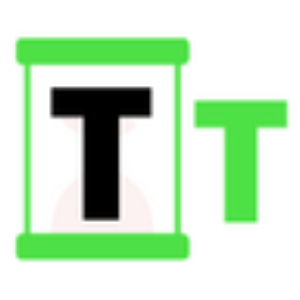Market Pulse
Arbitrum, a leading Ethereum Layer 2 scaling solution, is making significant strides with its Orbit program, allowing developers to deploy custom, application-specific blockchains. This strategic move promises to redefine the landscape of decentralized applications by dramatically reducing transaction costs, increasing throughput, and offering unparalleled flexibility for builders. As of {current_date}, this initiative is poised to accelerate the mass adoption of blockchain technology, moving beyond generic chains to highly optimized environments tailored for specific use cases.
Arbitrum’s Strategic Vision for Modular Blockchains
At its core, Arbitrum Orbit represents a profound shift in how developers approach blockchain architecture. Rather than forcing all applications onto a single, shared Layer 2 chain, Orbit empowers projects to launch their own dedicated Layer 2s or Layer 3s that settle back to Arbitrum One or Nova, and ultimately to Ethereum. This modular approach allows for ‘sovereign’ chains where projects gain granular control over their environment, including aspects like governance models, transaction fee mechanisms, and even the choice of gas token. It positions Arbitrum not just as a singular scaling solution, but as a foundational infrastructure provider enabling a diverse ecosystem of specialized, interconnected blockchains.
The Promise of Tailored Chains and Reduced Fees
The primary allure of Arbitrum Orbit chains lies in their ability to dramatically lower operational costs and enhance performance. By operating on a dedicated chain, applications no longer compete for block space with other dApps, which significantly reduces network congestion and leads to more predictable, often drastically lower, transaction fees. This is critical for applications requiring high transaction throughput or those where micro-transactions are fundamental, such as blockchain gaming, complex DeFi protocols, or decentralized social media platforms. Furthermore, developers can customize virtually every aspect of their chain, from its validator set to its execution environment, ensuring it perfectly aligns with the dApp’s specific requirements.
- Cost Efficiency: Users benefit from significantly reduced and more predictable transaction fees.
- Unprecedented Customization: Full control over chain parameters, including governance, fee structure, and gas token.
- Dedicated Throughput: Eliminates competition for block space, ensuring faster and more reliable transaction processing.
- Enhanced Scalability: Supports a massive increase in transaction volume beyond what shared L2s can offer.
- Seamless Interoperability: Maintains strong connectivity and composability with the broader Arbitrum and Ethereum ecosystems.
Impact on the Broader Ethereum Ecosystem and Beyond
Arbitrum Orbit chains are not just a boon for individual dApps; they represent a significant step forward for the entire Ethereum ecosystem. By providing a robust and flexible framework for specialized chains, Orbit directly addresses Ethereum’s long-standing scalability challenges, allowing the base layer to remain secure and decentralized while offloading execution to more efficient layers. This innovation also intensifies the competitive landscape among Layer 2 providers, pushing projects like Optimism (with its Superchain vision) and Polygon (with its Chain Development Kit) to further innovate their own custom chain solutions. Ultimately, this competition drives ecosystem growth, attracts new developers, and accelerates the migration of users and applications to scalable blockchain environments, fostering innovation and pushing Web3 closer to mainstream adoption.
Challenges and Future Outlook
While the potential of Arbitrum Orbit is immense, its journey is not without challenges. The adoption curve for new blockchain frameworks can be steep, requiring substantial developer education and support. Ensuring the long-term security and decentralization of newly launched Orbit chains will be paramount, particularly for those with unique validator sets. Furthermore, the burgeoning modular blockchain space is highly competitive, and Arbitrum will need to consistently innovate and foster a strong developer community to maintain its leading position. Despite these hurdles, the trajectory points towards a future where a highly modular, interconnected, and customizable blockchain world becomes the norm, with Orbit playing a pivotal role in enabling this paradigm shift.
Conclusion
Arbitrum’s foray into custom Orbit chains represents a pivotal moment for the Ethereum ecosystem and the broader decentralized landscape. By offering unparalleled flexibility, cost efficiency, and scalability, it is paving the way for a new generation of decentralized applications that were previously constrained by technical limitations. While challenges inherent in any nascent technology persist, the strategic implications of empowering developers to build tailored blockchain environments are profound. This innovation positions Arbitrum as a key enabler for the next wave of web3 adoption, fundamentally altering how we interact with and build on decentralized networks, bringing us closer to a truly scalable and user-friendly decentralized internet.
Pros (Bullish Points)
- Enhanced scalability and throughput for dApps and broader ecosystem.
- Significant reduction in transaction costs, improving user experience and accessibility.
- Greater customization and control for developers to build highly optimized applications.
- Fosters innovation and diversification across the Ethereum ecosystem.
Cons (Bearish Points)
- Increased complexity for chain deployment and ongoing management.
- Potential for network fragmentation if too many specialized chains emerge without clear interoperability standards.
- Intense competition from other Layer 2 scaling solutions offering similar functionalities.
- Requires strong developer adoption and ecosystem growth for widespread impact.



